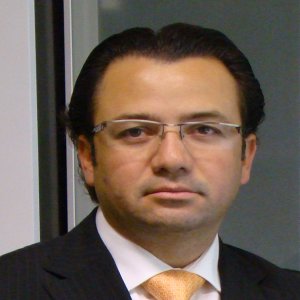Advancement of AUV Technology
STORY INLINE POST
Traditional methods employed by oil and gas companies to map the seabed have been unable to keep pace with companies’ advancement into ever-deeper waters. A larger water column between the seabed and the surface often degrades the quality of the data collected. One traditional option has been to deploy sensors directly to the seabed via a tether, but longer tethers often make hydrographic survey inecient, and as the length of the tether increases, so does the cost.
Autonomous Underwater Vehicles (AUVs) have been used by the military and others conducting oceanographic studies for many years, but oil and gas companies have only started to adopt the technology over the last decade. BP was one of the first companies to consider using AUV technology for its deepwater exploration activities, and introduced the first AUV exploration project in 2001. BP believed that AUVs would be suitable replacements for conventional ship-borne hydrographic surveys, and also as a replacement for tethered Remotely Operated Vehicles (ROVs). However, in 2001, there were issues surrounding immediate replacement. Firstly, battery life restricted either the endurance or the amount of sensors an AUV could carry. Secondly, at that point navigation and control systems sucient to conduct geological surveys of the complexity required by the company had not been placed on an AUV.
After releasing a tender to the AUV construction community, two ‘survey-class’ vehicles were built. One of these was constructed by Kongsberg, and owned and operated by Louisiana-based survey company C&C Technologies. BP used his vessel, the Hugin 3000, in US Gulf of Mexico water depths of up to 2300m.
Since the Hugin 3000, C&C has worked to develop its AUV technology for commercial use. Today, the company has a fleet of four AUVs for commercial deepwater use, and between them have surveyed more than 200,000km worldwide. The company is also investing in R&D to bring AUV technology to ever more challenging environments. Early in 2011, C&C announced that it was collaborating with Shell to develop an ‘ice-class’ AUV capable of operating under ice. New areas of research include establishing remote stations for AUV navigation and communication, AUV recovery by net and ROV, upward looking multi-beam sonar and collision avoidance technology.
C&C Technologies considers itself a world leader in AUV technology, but does not expect that opportunities to introduce its technology to Mexico will be forthcoming in the next few years. José Aguilar Castro, Director General of C&C Technologies México, explains that “We hope that over the next few years, Mexico will develop its deepwater potential. C&C Technologies excels in deepwater, and it would be a privilege to bring our technology to Mexican waters. But in order for that to happen, we need to see Pemex do more to capitalize on its deepwater potential, which will take time. We estimate it will be five years before we are ready to introduce C&C’s AUV technology to Mexican deepwater projects.” In the meantime, Aguilar Castro is finding innovative ways to apply his company’s technology in the Mexican marketplace. Although the company is predominantly focused on oshore solutions, today 50% of C&C’s business in Mexico comes from working onshore. By applying C&C’s cutting edge oshore technology to onshore problems, we can bring solutions that no one has considered before. The opportunity to continue doing this is huge. I expect that until deepwater becomes viable in Mexico, we will be kept very busy onshore.”




















